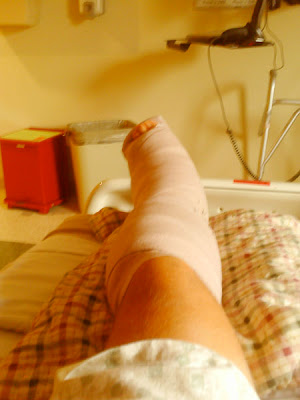It's been icy this winter. I've stayed home when it's been bad. I'm lucky that I can do some work from home. I tried to go into work once, but had a bad slip on the ice and put all my weight on my left (healing) foot. It's a strange feeling. My whole leg stiffened involuntarily before I fell on it. I suppose to protect itself. It ached afterwords, but I am sure I haven't done any damage. I have fallen this way twice now. Once on the ice, and once in my kitchen on a stray paper towel. You can never be too careful.
I'm writing tonight because I cannot sleep and just had a bad run of diarrhea. I stopped taking Vicadin two days ago and have just been taking Tylenol. I can't help but think that some of my symptoms are mild withdrawal symptoms. I have been taking Vicadin steadily for over a month.
Pain comes and goes. I mostly feel pain on my commute back and forth to work. I'm in the car for about 50 minutes in the morning and about an hour in the evening. My foot is down the whole time. The bumps in the road and the mild rocking back and forth causes some bone discomfort. The nerve pain mostly occurs at night when my foot has been in the same position for a while.
I keep my foot up whenever I can. It's still the best pain relief. But I am restless. Depression has really been a big struggle. We have three children; all boys. During the holidays, the funeral and preparations, my wife still had to take care of us all. I had very little to offer in the way of help. It really stinks to be layed up like this. Was it worth it? Time will only tell.
I'm still wearing the boot and I'm still on crutches. I hate the boot. I'm sure anyone who has worn the boot also hates the boot. I'll sign this post off with a photo of my least favorite friend...the boot, and a Christmas Tree.



















